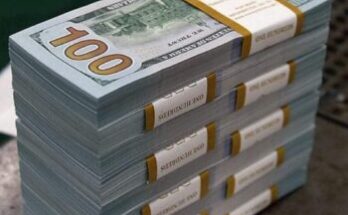The year 2021 is running away but the level of uncertainty remains elevated, Bismarck Rewane has said.
He however added that, “the Nigerian economy is expected to recover mainly in the second quarter (Q2) of 2021 by between 1.0 per cent and 1.2 per cent.
Rewane who is the Chief Operating officer of Financial Derivatives Company (FDC) Limited, said, the most probable reason for the uncertainty is the inflation risk.
Underlying structural bottlenecks, particularly insecurity in the food belt and foreign exchange (forex) restrictions on finished food imports, will continue to drive inflation.
This is in spite of the re-opening of the land borders. Higher fuel and electricity tariffs will further stoke inflationary pressures and push the headline index to an average of 16 per cent in 2021.
The FDC’s publication said, “we believe the Central Bank of Nigeria (CBN) will reduce forex rationing and allow a crawling peg in its battle to bring inflation under control. A crawling peg will effectively allow the naira to fluctuate within a band – permitting a managed depreciation (probably monthly) of the currency rather than a large one-off devaluation.
He wants the monetary policy committee (MPC) to prioritize price stability and hike interest rates as inflation is projected to rise further.
“This will ease currency pressures, restore stability in the external sector and attract foreign portfolio investments. However, higher interest rates will raise the government’s financing costs and could stifle the economic recovery.
“Interest rates are 18 per cent below food inflation, diaspora remittances are being exchanged at multiple rates and government debt is still a burden.
“The reality is that the road to recovery will be hard and uneven while the pace will depend on the effectiveness of fiscal, monetary and trade policies. In spite of the economic recovery, the resolution of multidimensional poverty remains the major challenge, the latest report of FDC publication said.
“The great news is that oil prices are stable above $50, which is 25 per cent above the 2021 budget benchmark of $40pb. This should support the reflationary budget of N13.59 trillion to narrow the fiscal deficit, and reduce external imbalances.
“In 2020, before the coronavirus plunged the Nigerian economy into a pandemic- induced coma, and before the disruptions of the #EndSARS protests that became riots, Nigeria was already grappling with limited buffers, double-digit inflation and significant vulnerabilities. The government’s response to the crisis was rendered largely ineffective by plunging oil prices and its weak response.
“Our expectations are that Nigeria will witness a tough, slow and uneven recovery across various activities in the economy. Nigeria has always relied on the unbalanced growth theory with the momentum and force of gravity of a dominant sector pulling the sectors along. The recovery will be back loaded (in Q3 and Q4) and ably supported by the policy- making front.
“Our forecast is for the Nigerian economy to post positive growth of 1.0 per cent-1.2 per cent driven by a projected increase in oil output and price above $50pb. There is an expectation of an increase in the national savings ratio to GDP – as the federal gov- ernment securitizes its debt. This is also likely to be accompanied by a shift to more orthodox monetary policy by Q2.”
“It is also expected that an improvement in Nigeria’s Terms of Trade as prices of key exports (oil and gas) are projected to rise faster than the prices of Nigeria’s major imports. In addition, the loss in forex receipts from challenges in cocoa pricing as the cartel of Ghana and Ivory Coast lose bargaining power will be offset by a surge in the price of Liquefied Natural Gas (LNG).
“The risks to growth include a surge in COVID-19 cases that the government is unable to handle. This could trigger an- other lockdown and prolong the recession – and possibly spark civil unrest as many businesses will be unable to operate. A sharp drop in oil prices below $40pb and the negative impact on government revenue and external imbalances is also a major risk to GDP growth and overall macro-stability.




